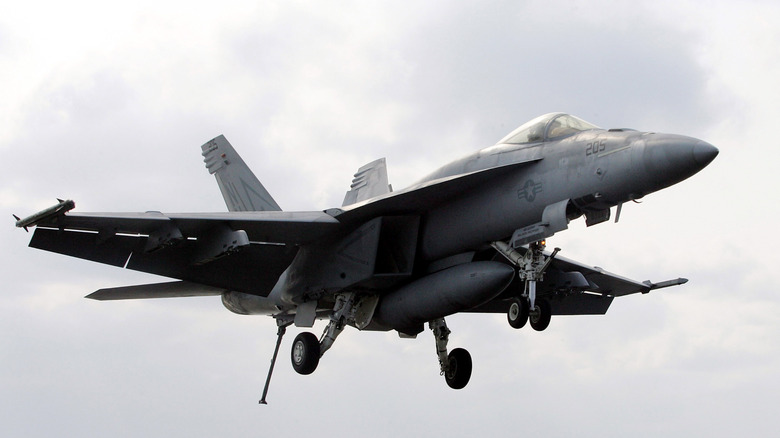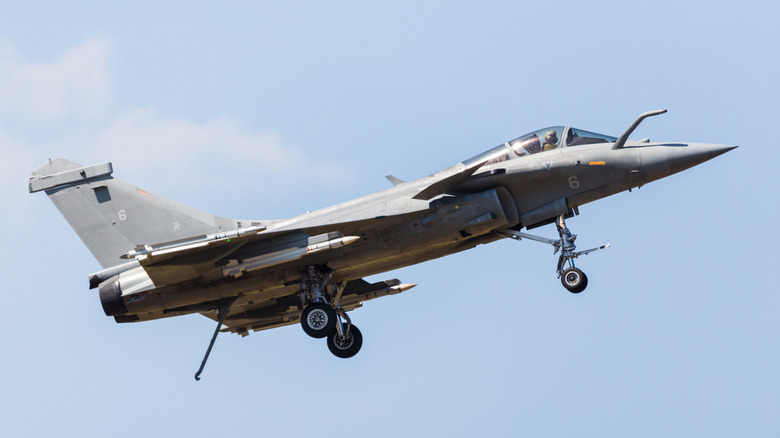Why Do Some Fighter Jets Have Tail Hooks?
When you fly fighter jets for the United States Navy, your landing skills need to be immaculate because you don't have much more than 300 feet to land on, which is the approximate width of aircraft carrier runways. The width of the longest military runway is at Edwards Air Force Base in California, spanning 15,024 feet in length. Meanwhile Denver International Airport's longest runway is 16,000 feet long. There are sweet spots naval aviators need to hit even when they land on the largest aircraft carriers. Needless to say, it's significantly less breathing room than Air Force and commercial pilots are accustomed to.
Along the flight deck of a carrier are four long metal wires that run parallel to each other called arresting wires. They're spaced apart by 50 feet and can stop a 30,000-pound aircraft going 150 miles per hour almost dead in its tracks. When a new F/A-18 Block III Super Hornet lines up for a landing, the pilot aims for the third arresting wire. That's the sweet spot. Aiming to snag the tail hook on the first wire is risky because it's so close to the flight deck's rear edge. Pilots could potentially come in too low, resulting in a collision.
As soon as a wire catches the tail hook, it transfers the aircraft's kinetic energy to the hydraulic system that's below the flight deck. The wires themselves are a relatively simple design that keeps an otherwise complex war machine operational.
It's not just the Navy
Taking off in a fighter jet is exciting and adrenaline-inducing. Landing, on the other hand, can be nerve-wracking as there is significantly much more that can go wrong. United States Air Force fighter jets might have a lot more runway to work with and don't use a tail hook regularly, but they do still have one. The most common reason for Air Force jets to have a tail hook is maintenance engine testing. The tail hook secures the aircraft to the ground, allowing mechanics and engineers to do their work without it taking off. That would be quite the SNAFU. The only other reason for them to have tail hooks is in the case of an emergency landing.
As recently as 2022 an F-16, one of the oldest military jets still in service, had to make a hard landing – landing at a speed that exceeds the manufacturer's touchdown limitation – at Honolulu's airport when it suffered a landing gear malfunction.
In 2021, an F-22 Raptor from the 199th Fighter Squadron had to land with the tail hook at Joint Base Pearl Harbor-Hickam. While arresting wires are a feature on every aircraft carrier, they're not found on every single runway on a land base. However, you can see the BAK-14 arrestor gear system on some air base runways in case of an in-flight emergency.

